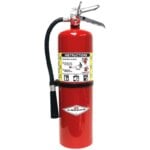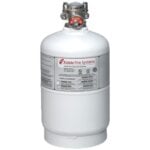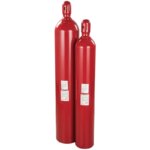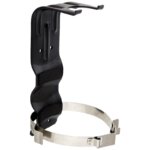Fire Extinguishers
Protect your mission-critical operations and valuable assets with our Special Hazard & Releasing Systems. Using specialized extinguishing agents and delivery methods can effectively suppress fires in sensitive environments where specific hazards exist. Discover our solutions designed to minimize damage, ensure business continuity, and meet stringent safety regulations.
Top Selling Fire Extinguishers
$9,672.00
$1,719.00
$600.00
$240.49
Customer Buyer's Guide
A fire extinguisher can be used to fight small fires before they grow to become life-threatening. However, using the wrong type of fire extinguisher can actually make a fire worse. Here is what you need to know to purchase the correct extinguisher and keep yourself safe from harm.
Fire Classification
Class A: Fires caused by ordinary combustibles such as wood, paper, cloth, rubber, and plastics.
Class B: Fires caused by flammable liquids like gasoline, oil, and solvents.
Class C: Persistent fires started by energized electrical equipment like appliances, tools, and computers (Electrical Fires).
Class D: Fires involving combustible metals like magnesium, titanium, and sodium. These may require specialized extinguishing agents specific to the metal.
Class K: Specifically for fires in commercial kitchens involving cooking oils and fats.
Fire Extinguisher Types
Water: Effective for class A fires. Water types cool down and smother fires until they are extinguished.
Foam: Effective for class A and B fires. These types discharge a foam that cuts off the fire’s oxygen supply while absorbing heat.
Carbon Dioxide: Effective for class B and C fires. CO2 displaces oxygen, extinguishing the fire without damaging expensive equipment.
Dry Chemical: Effective for class A,B, and C fires. Smothers the fire, separating it from oxygen and absorbing heat.
Wet Chemical: Effective for class A and K fires. A fine mist of solution cools the fire and forms a foam coating to prevent re-ignition.
Dry Powder: Effective for class D fires. These types are intended for use on class D fires and for specific metals.
Clean Agent: Effective for class B and C fires. Absorbs heat, and cuts off the fire’s oxygen supply.
Size / Capacity
Portable Fire Extinguishers: Smaller, handheld units designed for individual use. (e.g. 2.5lb, 5lb, 10lb)
Wheeled Fire Extinguishers: Larger units mounted on wheels for easier transport to the fire location, often used in industrial or high-hazard areas.
















